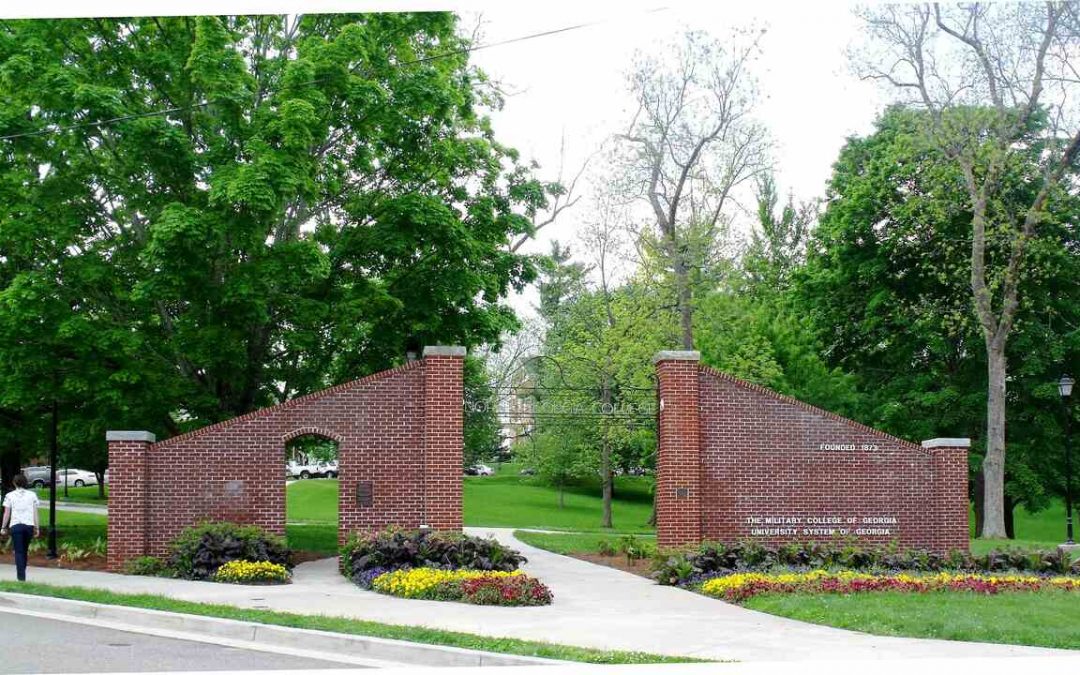North Georgia enjoys all four seasons to the fullest. This diversity is super, but it can also disrupt a lawn’s appearance and health as the weather changes.
The secret to a problem-free and attractive lawn is to choose a grass that is adapted to your area. Luckily, both warm-season and cool-season grasses do well in mountainous North Georgia. But these seven grasses really thrive in North Georgia and can provide the luscious, evergreen yard you want
In this article:
- 4 Warm-Season Grasses for North Georgia
- 3 Cool-season Grasses for North Georgia
- FAQ about North Georgia Grass Types
- Are You Picking the Right Grass Type for Your Landscape?
4 Warm-Season Grasses for North Georgia
Before we get to the details, here’s a quick overview of warm-season grasses:
- They are hardy and grow best between late spring and summer.
- The ideal temperature for warm-season grasses is between 80 and 90 degrees.
- Their grass blades are thick, rough, and tough, as opposed to cool-season grasses.
- Their ideal mowing height is shorter than cool-season grasses.
- They go dormant in the winter.
Here are four warm-season grasses best suited for your Georgia yard.
1. Bermudagrass
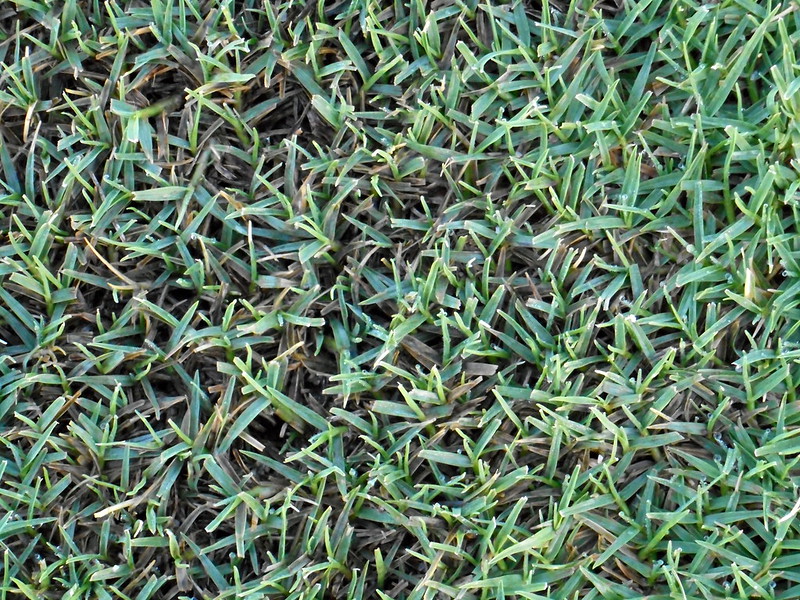
Photo Credit: Scot Nelson / Flickr / CC0 1.0
This warm-season grass is popular in Georgia because of its hardiness. It develops a dense, low-maintenance turf that won’t need much watering during the hot summer months. The density comes from its underground woven rhizome and stolons and translates into excellent foot traffic tolerance.
Tightly packed Bermudagrass blades also naturally crowd out weeds. Bermudagrass is fast-growing, drought-tolerant, and resists salinity and heat. It also does well in a wide range of soil pHs. Rapid growth rate also helps this grass type to recover quickly from wear and traffic damage.
The only downside of Bermudagrass is that it needs a full, bright sun to thrive. Plus, the dense turf needs regular dethatching to stay disease free. It goes brown and dormant in the winter and greens up around early April in North Georgia. The growing season may vary at different elevations.
Spreads by: Rhizomes and stolons
Drought tolerance: High
Shade tolerance: Low
Foot traffic tolerance: High
Maintenance needs: High
Potential for disease: Moderate
Recommended mowing height: 1 to 1.5 inches
Soil pH: 5.8 to 7.0
Pros:
- Excellent choice for transition zones
- Deep roots that store water to fight drought-like conditions
- Makes a suitable choice for golf courses and public spaces
- Comes in several different varieties
- Can be established with plugs, seeds, sprigs, and sod
Cons:
- Low cold tolerance, but some new varieties come with better cold forbearance
- Needs a lot of upkeep
- Prone to thatch
2. Zoysiagrass
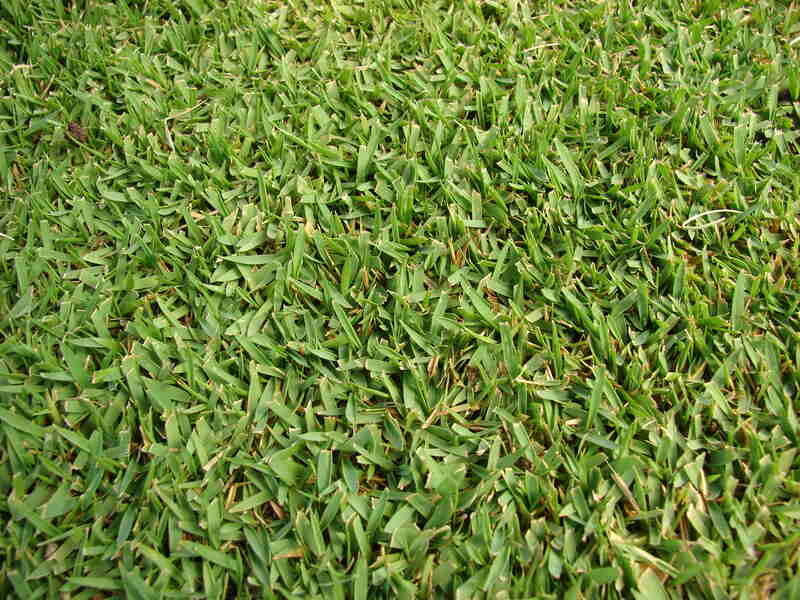
Photo Credit: Forest & Kim Starr / Wikimedia Commons / CC BY-SA 3.0
This is a resilient, cold-tolerant, and dense warm-season turf that will give your lawn all hues of green around the year. It is popular among homeowners with pets and kids due to its sturdiness and impressive foot traffic tolerance.
Zoysiagrass blades establish a dark green color that slowly fades as the temperature drops. It thrives in direct sunlight but won’t mind some shade too. Its improved cold tolerance is quite fitting for North Georgia.
Although it’s a dense grass, it won’t need as much mowing as other warm-season grasses. But you need to detach regularly.
Despite being a drought-tolerant perennial species, Zoysiagrass needs frequent watering during the summer. It tackles a good amount of foot traffic and is also super easy to maintain.
Spreads by: Rhizomes and stolons
Drought tolerance: High
Shade tolerance: Moderate
Foot traffic tolerance: High
Maintenance needs: Low
Potential for disease: Low
Recommended mowing height: 1 to 2.5 inches
Soil pH: 5.8 to 7.0
Pros:
- One of the best barefoot grasses because of its soft texture
- Keeps weeds away
- Is salt tolerant
- Comes in wide-bladed and fine-bladed varieties
- Works well with sand, loam, and clay
- Generally drought tolerant; survives well but might go dormant
Cons:
- Slow to grow and recover
- May develop thatch due to nitrogen sensitivity
- Might be expensive to establish the first time
3. St. Augustinegrass
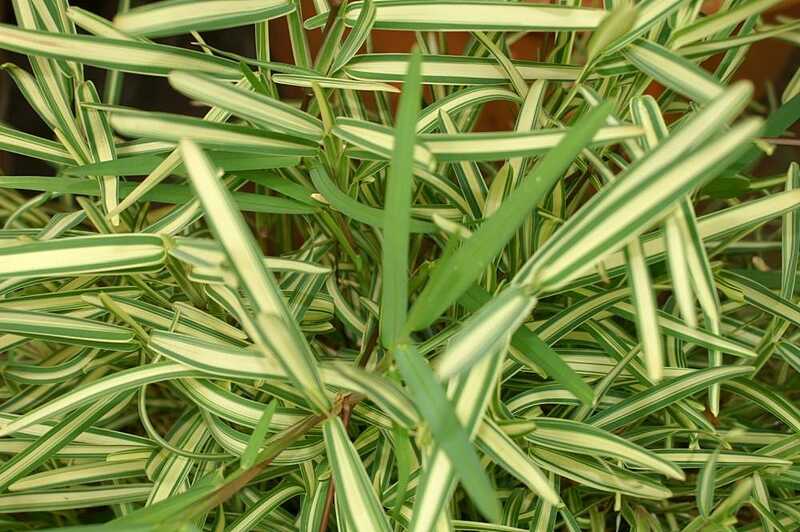
Photo Credit: David J. Stang / Wikimedia Commons / CC BY-SA 4.0
This grass type is great if you want dense, cushioning turf in your yard. St. Augustinegrass develops broad-leafed, coarse-textured grass blades that are hardy enough to tolerate shade and salty soil.
This is the least cold-tolerant warm-season grass and is the slowest to gain its green lusciousness back in spring. St. Augustinegrass can tolerate extreme heat and has the capacity to thrive in all soil types, but only if the soil is well-drained.
The only minus of a St. Augustine lawn is that it won’t do great with lots of foot traffic. If your household is outdoorsy or you have pets and kids who like to hang around the yard, you might prefer Bermudagrass or Zoysiagrass.
Spreads by: Stolons
Drought tolerance: Moderate
Shade tolerance: Moderate
Foot traffic tolerance: Low
Maintenance needs: High
Potential for disease: High
Recommended mowing height: 2.5 to 3 inches
Soil pH: 6.0 to 6.5
Pros:
- Dense, soft, and comfortable turf
- Can develop from seeds, plugs, and sod
Cons:
- Low cold tolerance
- Less tolerant of foot traffic
4. Centipedegrass
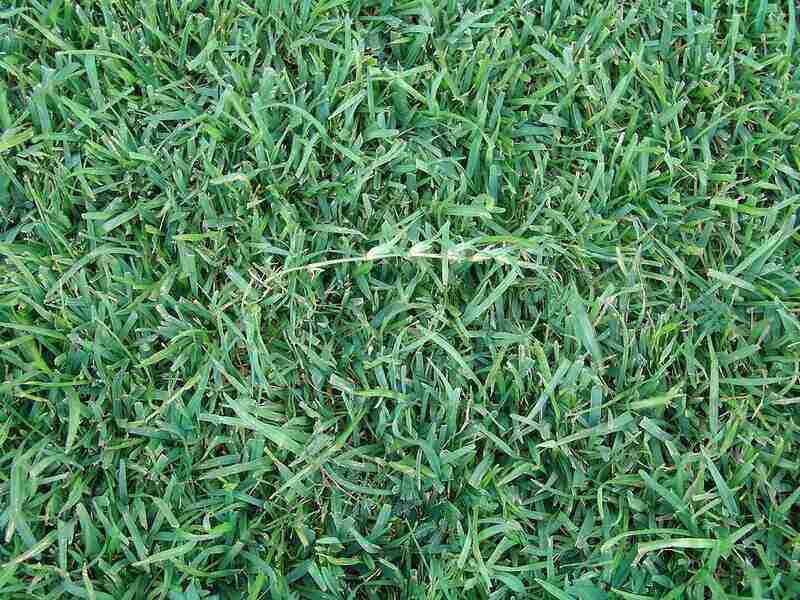
Photo Credit: James Becwar / Wikimedia Commons / CC0 1.0
If you’re looking for low-maintenance grass, Centipedegrass is your pick. It’s a highly drought-tolerant grass that does pretty well with little to no fertilization.
Centipedegrass spreads by stolons and is one of the slow-growing grass types; it might even take a few years to fully establish if grown from seed. Typically, it creates a yellow-green lawn, that will turn a darker green when nitrogen fertilizer is applied. But resists the urge. Over-fertilization only increases maintenance needs and makes the grass sensitive to cold, thatch, and disease.
Generally, centipedegrass lawns don’t respond well to overseeding and cold weather. But this grass type is fairly tolerant of shade and drought-like conditions, and repels weeds.
Spreads by: Stolons
Drought tolerance: High
Shade tolerance: Low to moderate
Foot traffic tolerance: Low
Maintenance needs: Low
Potential for disease: Moderate
Recommended mowing height: 1.5 to 2 inches
Soil pH: 5.0 to 6.0
Pros:
- Doesn’t need much fertilizer
- Fights insects and weeds on its own
- Easy to control around flower borders due to slow-growth
Cons:
- Slowest-growing warm-season grass
- Very intolerant of foot traffic
3 Cool-season Grasses for North Georgia
A few details about cool-season grasses you should know about:
- Cool-season grasses are tough and highly cold-tolerant.
- They are planted in late summer or early fall.
- These grasses grow best in temperatures between 60 and 75 degrees.
- They go dormant in the summer.
- Ideal mowing height is taller than warm-season grasses.
- Can only be mixed with fine or medium-textured warm-season grasses for an even appearance.
- They are not bothered by shade.
Let’s take a look at these three cool-season grasses for your North Georgia yard:
1. Perennial Ryegrass
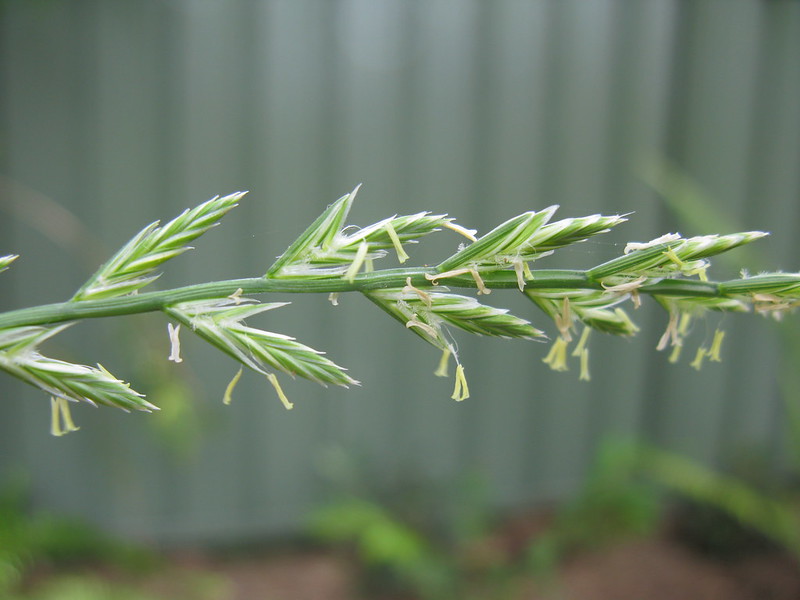
Photo Credit: Harry Rose / Flickr / CC BY 2.0
This type of grass makes a great winter cover or a temporary yard for your Georgia landscape. You can plant perennial ryegrass as a protective cover over your warm-season grass to help it survive North Georgia’s cold winter with the nicest pop of green.
You can also mix it with Kentucky bluegrass to improve its traffic and disease resistance. Perennial ryegrass naturally germinates quickly, suppresses weeds, and maintains a lovely green color through the winter.
It develops tapered, fine-textured, and shiny blades that need regular maintenance to look uniform and good.
Spreads by: Bunch-type, extends with tillers
Drought tolerance: Low
Shade tolerance: Low
Foot traffic tolerance: High
Maintenance needs: Moderate to low
Potential for disease: High
Recommended mowing height: 1.5 to 3 inches
Soil pH: 6.0 to 7.0
Pros:
- Resists thatch
- Fast-germinating
- Maintains a medium to dark green color in winter
- Soft and cushioned to feel
Cons:
- Prone to diseases
- Low shade tolerance
- Slow recovery after injury
2. Tall Fescue
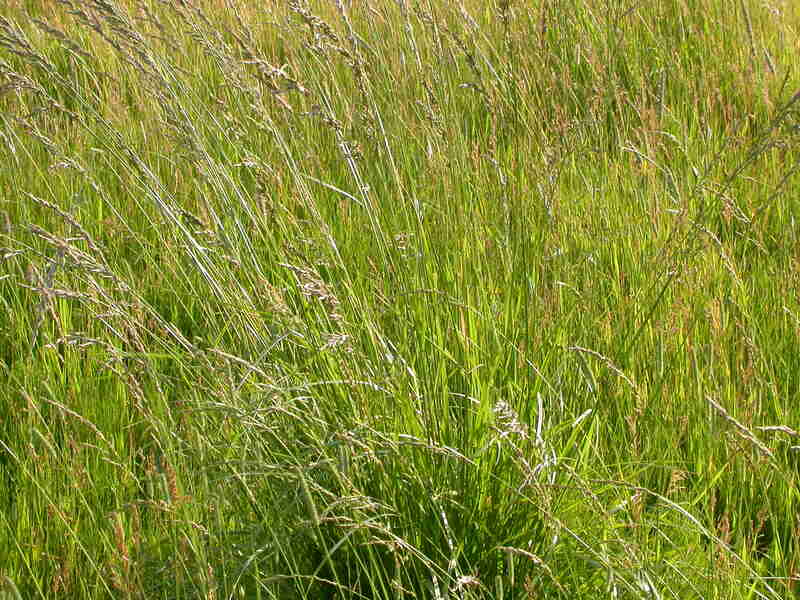
Photo Credit: Matt Lavin / Flickr / CC BY-SA 2.0
This is your go-to cool-season grass for a lawn in North Georgia. It’s shade-tolerant, drought-resistant, and highly adaptable to changing weather conditions. This grass type will also stay green throughout the year if you give it proper care. Plus, it’s pretty low-maintenance and is easy for beginners.
Tall fescue survives in poor soil conditions and with low fertilization. Generally, tall fescue is also highly resistant to pests and diseases. Its coarse, wide blades proliferate fast and help the grass recover quickly from foot traffic or other damage.
Spreads by: Bunch-type
Drought tolerance: High
Shade tolerance: High
Foot traffic tolerance: Moderate to high
Maintenance needs: Very low
Potential for disease: Low
Recommended mowing height: 2 inches
Soil pH: 5.8 to 6.5
Pros:
- Resistant to disease and insects
- Good traffic tolerance
- Stays green in Georgia winters
- Isn’t bothered by nutrient-poor soil
Cons:
- Slow growing
- Needs direct sunlight for better turf
3. Kentucky Bluegrass
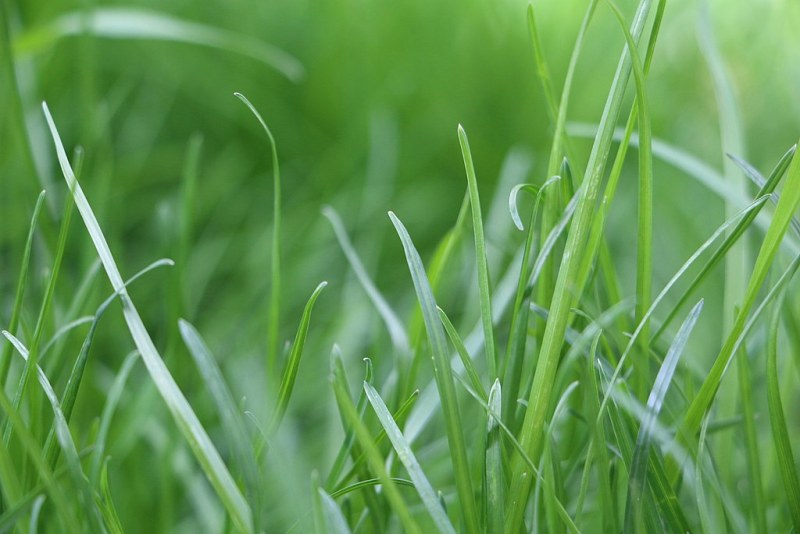
Photo Credit: Pilot138-17 / Wikimedia Commons / CC BY-SA 4.0
This grass type creates a beautiful bluish-green lawn and grows best in Georgia’s cooler, northern areas.
Kentucky bluegrass is high maintenance. It needs more fertilizer, water, and herbicide than any other cool-season grass type. It prefers areas with partial shade, but will also handle full sunlight if watered generously. Kentucky bluegrass makes a soft, “walkable” lawn, but won’t adjust well to excessive foot traffic.
Spreads by: Rhizomes
Drought tolerance: Moderate
Shade tolerance: Moderate
Foot traffic tolerance: Low to moderate
Maintenance needs: Moderate to high
Potential for disease: High
Recommended mowing height: 2.5 to 3 inches
Soil pH: 6.0 to 7.0
Pros:
- Recovers quickly from wear and damage
- Develops into a strong lawn
- Comfortable to walk barefoot on
Cons:
- Goes semi-dormant in early summer
- Requires more water and fertilization
- Susceptible to thatch
Frequently Asked Questions About Grasses for North Georgia
Zoysiagrass requires little maintenance. This fine-textured grass resists disease and drought and thrives in a variety of growing conditions.
Bermudagrass is popular across Georgia because of its incredible drought tolerance, dense appearance, low maintenance needs, and overall sturdiness.
Tall fescue can stay green year-round, provided you appropriately care for it. This grass type thrives in yards that have both shady and sunny areas and makes do with minimal maintenance in colder months.
Are You Picking the Right Grass Type for Your North Georgia Landscape?
Building and keeping a healthy lawn in cities with temperamental weather can get tough, but the best way to do it is to choose the appropriate grass type for our climate.
For lawns in North Georgia, the best-suited cool-season grass is tall fescue, and Zoysiagrass for warm-season lawns.
If you aren’t sure which turfgrass would be good on your lawn, or you don’t wish to expend so much energy into researching, planning, and planting, call in one of our lawn care pros to help.
Main Image Credit: ZachJBeavers / Wikimedia Commons / CC BY-SA 3.0

